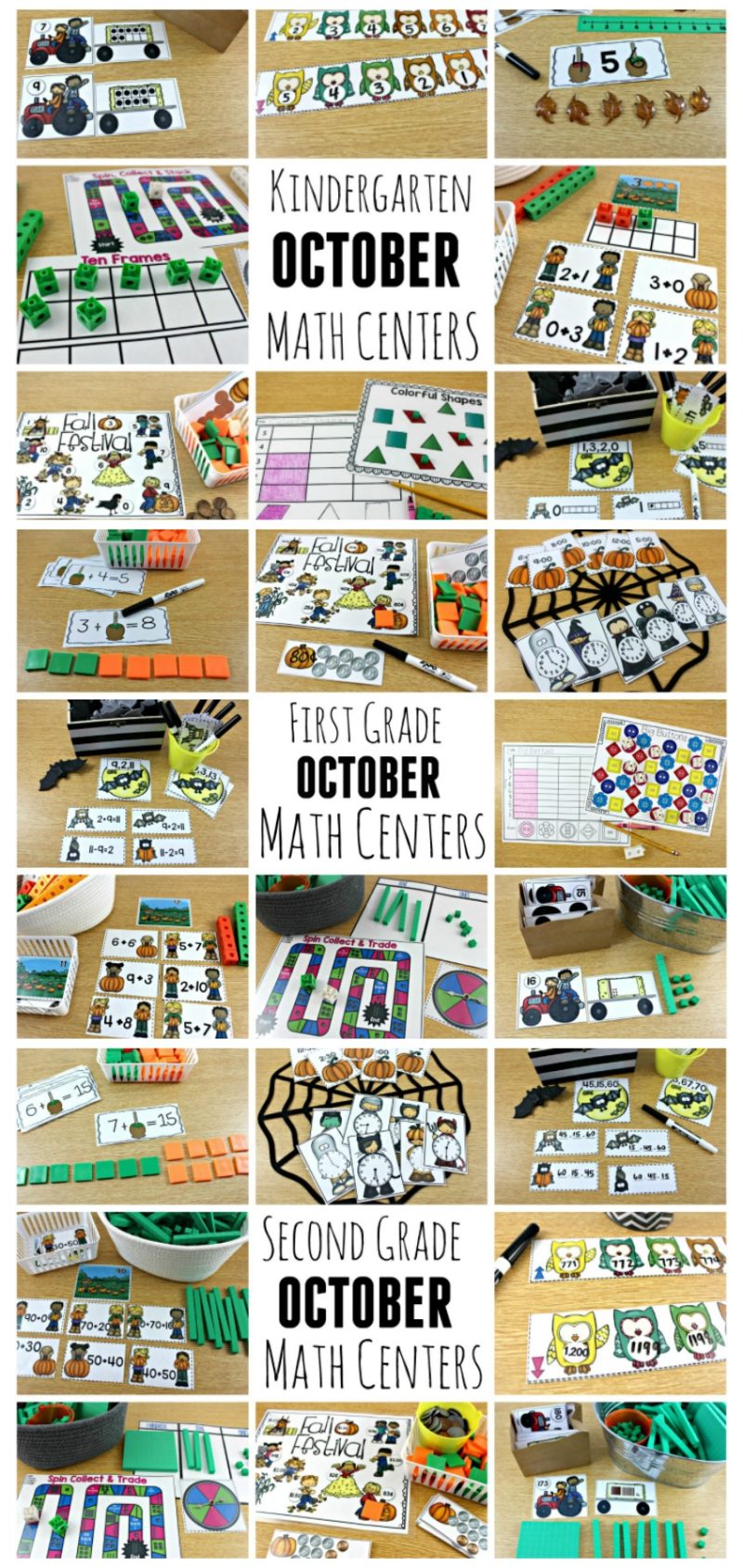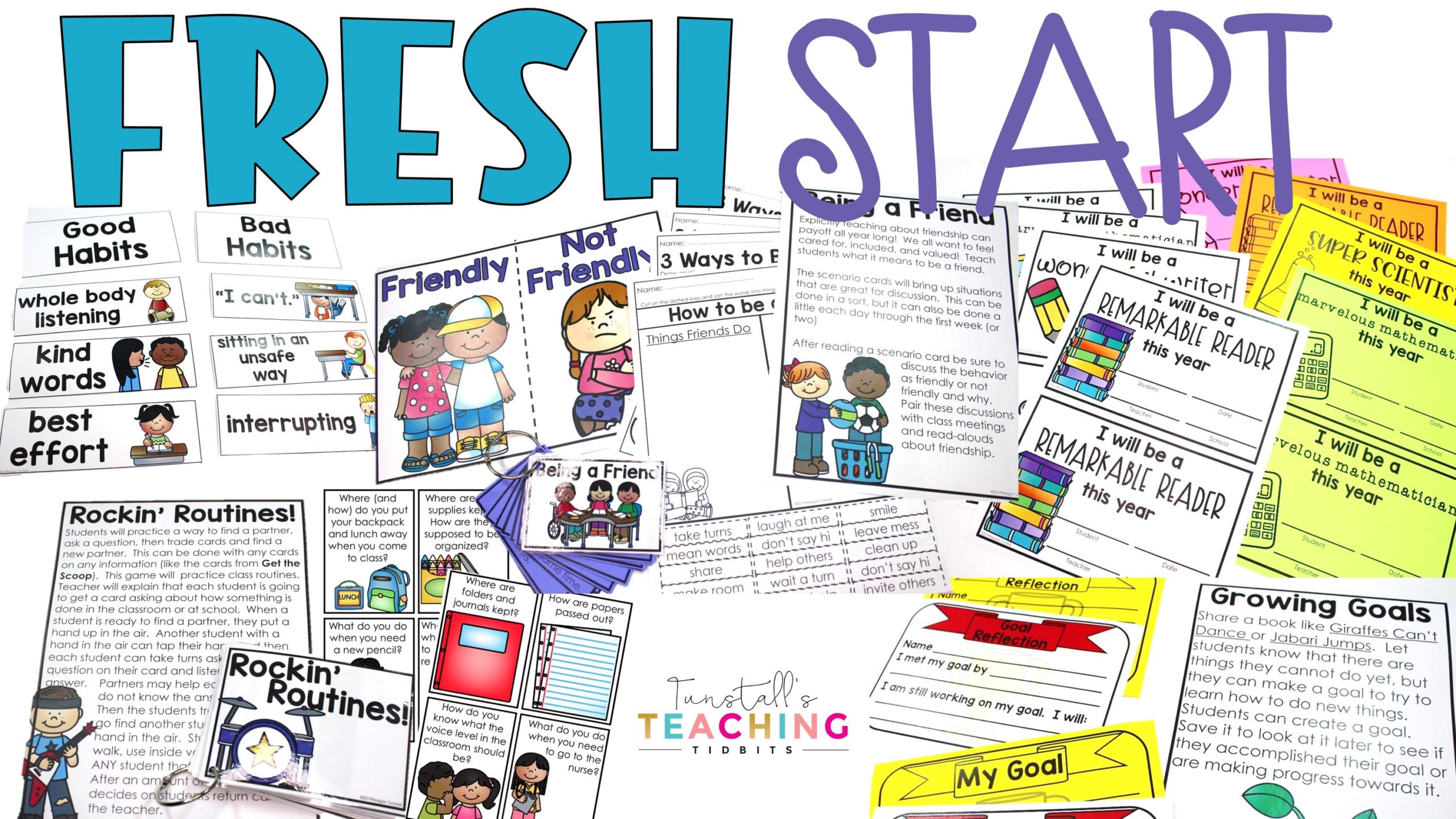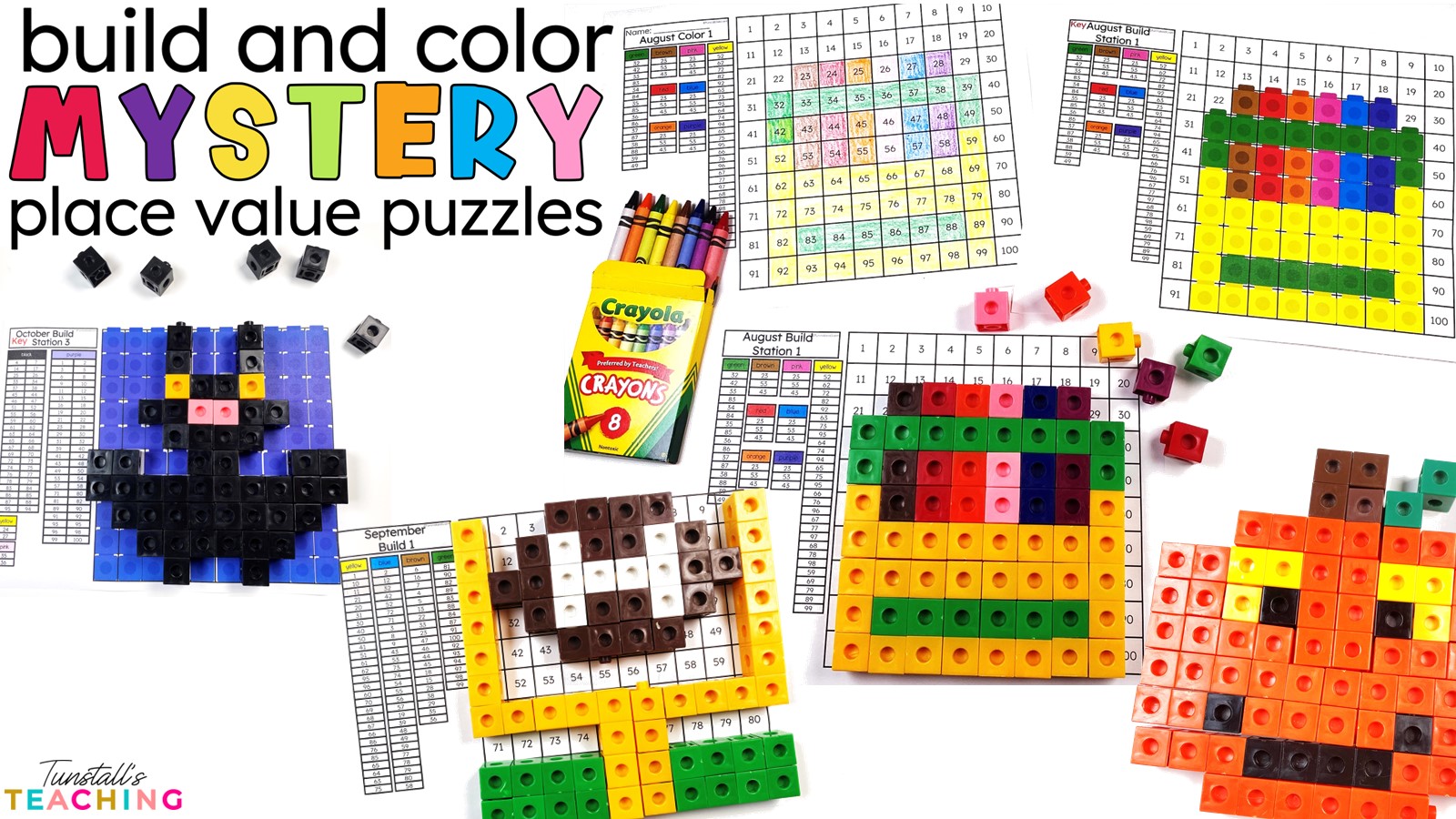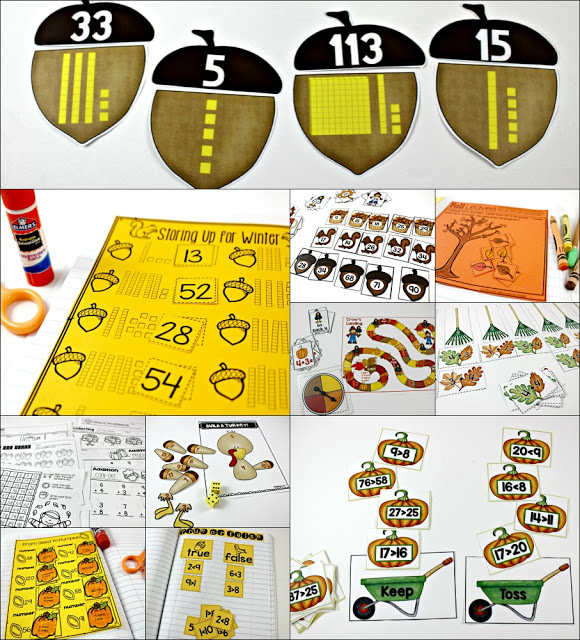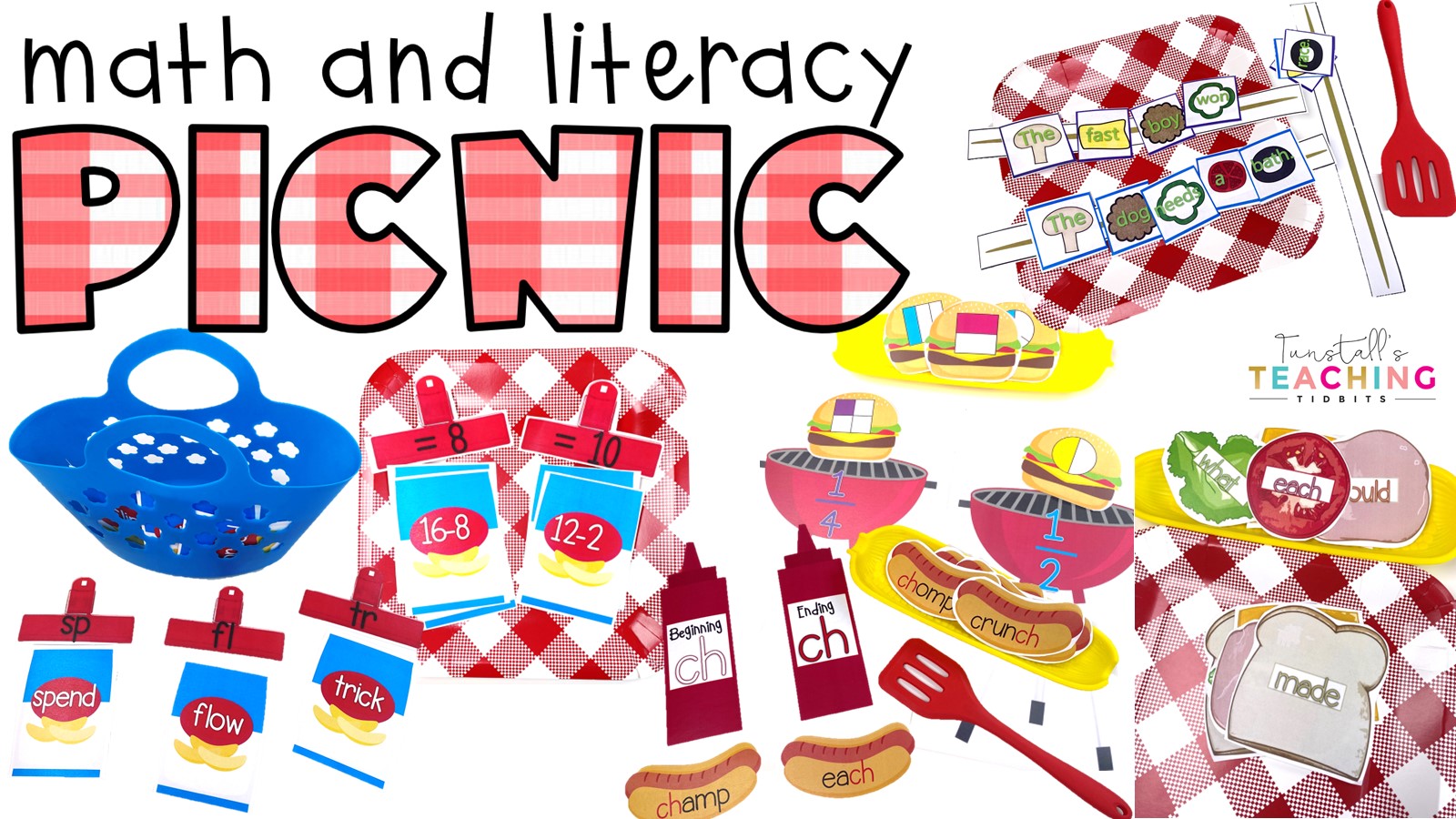October Math Centers K, 1, and 2

In a recent post, I shared my thoughts on teaching the ELA standards with seasonal themes. When it comes to math centers, including spiders, bats, and pumpkins is all it can take to pull in a reluctant math learner! Let’s face it, October isn’t the easiest month for teaching. The honeymoon is over! The standards are coming fast and strong. It’s parent teacher conference season. For this reason, making learning engaging is so important! I can’t wait to share this post with you on October math centers to let you know how to keep your kids from even thinking about misbehaving! I am going to share how to differentiate for them at the same time! Let’s get into it!
October Math Centers
Throughout the summer, I worked to create differentiated centers across kinder, first and second grades. I am excited to show you how they allow students to reinforce and apply standards independently! First of all, let’s talk about content.
Why don’t I choose to stick with one concept per month?
If I am focusing on one concept in my math teaching, why do I then put out many different concepts for rotations? The answer is simple! When we learn a new math concept and immediately practice and apply it, we are successful. Hooray! That’s our goal! But, if we leave that concept behind and move on to the next one, and then the next one, all year long, we lose momentum and fluency with concepts learned back at the beginning of the year! Independent stations are for reinforcing learning. Not just this week’s learning, but all my learning all year long! I want to stay fresh! I want to apply a concept in numerous ways over time to become more solid in my understanding. I want to repeat a skill many times so that I naturally no longer use the concrete form, but can begin to apply more complex and abstract ways of solving. We see this when we play games with our own children at home. We play the same game numerous times. Each time we play we see more and more maturity from our child. The counting, the moving on the board, the strategy. It all becomes more refined. This is what we want with all math skills throughout the year.
A Natural Learning Progression
The October math centers cover 10 different concepts per grade level. Let’s take a peek at how this works! In the picture below, you can see the progression through the grade levels. On the left, in kindergarten, students use manipulatives and/or a number line to write the number before and after a number. In first grade, students are solving for a missing addend. Using manipulatives, students put out the number they know. Next, students count up to the sum placing a second color of manipulative out for each number they count. Once they reach the sum, they can see what the missing addend is! The same concept is happening in second grade, but the sums are greater.
Rainbow Tiles Found HERE
Let’s take a look at these matching cards! Because kindergarten has not yet had time introduced, we will focus on counting and cardinality. For first and second grade, we are building on last year’s time standards because I likely we have not yet introduced time to my class this year. In first grade, students are matching time to the hour. In second grade, students are matching time to the hour and half hour. This reminds students of what they learned last year and gets those cobwebs out to prepare for new learning this year! I can’t think of a more engaging way to review concepts of time than to do a fun matching game. This can be a pocket chart activity or played as a concentration game in partners.
Another example of this progression of learning is with addition. For kindergarten, students are building numbers on a ten frame. Once they count the total or sum of cubes, they can sort under the sum card. For first grade, we can use colored linking cubes and larger sums. Finally in second grade, we can add double digit tens to get large sums.
Snap Cubes found HERE Base Ten blocks found HERE
Graphing is always a fun independent center! Students love to count and graph! For kindergarten we are practicing counting like shapes. To help with this, have them place a manipulative on each like shape. This way students don’t forget what they have counted. Then students graph the number of each shape to build a graph. First grade is similar but the number of each shape and the graph is expanded to ten. For second grade, students have up to 20 items but what really sets this apart, is that the graph is set up by 2s. Students must graph by twos.
Students always get excited when the bats show up! Pull in your reluctant learners with the seasonal fun! Kindergarten is ordering numbers to ten and coloring to represent numbers. If students are not ready to order numbers, just leave that part out! First grade is recognizing related facts and matching them up to a set of related numbers. Second grade is writing their own related facts for each set of related numbers.
Using dry erase on owl bellies? I mean come on. HOOOO doesn’t want to do that?! {cringe, sorry} What’s great about these owl cards is that some of them have students counting up and others have students counting down. The number at the end, is a built in self assessment for students. When things don’t work out, they can go back and find out why! I may have experienced this myself while making these.
Game boards are always student favorites! In kindergarten students collect dots along the way and build them on their ten frames to see who can collect the most! First grade collects and trades up – ones to tens. Second grade collects, and trades up – ones, tens, and hundreds.
HAY, look what we have here. {double cringe} {don’t care} This tractor pull station is too fun. Students find the hay bale to match the number on the tractor. Kindergarten ten frames, first grade, teens tens and ones and second grade, ones, tens, and hundreds.
October Math Journals and Printables
These monthly sets don’t just have centers. They are designed to give you the resources you need to fill up those rotations. Not just math center, but math journal, and independent practice too! Essentially this provides you with three rotations of activities during guided math.
Here’s just three examples of math journal entries. If you want a recording sheet for what is happening during your rotations, this can be used as your evidence of learning. My students had 4-5 journal entries per week and 4-5 independent practice sheets in a math folder each week. I would check them on Thursdays. If students needed to finish things, they used their time on Fridays. This also allowed me to correct anything needed with them as well. Those that had all of their work completed, would get to choose an activity as a reward. *Shhh don’t tell them it’s still work, they thinks it’s great!**
Math journal story problems
Math journal- K- number order, 1st and 2nd- related facts
Math journal- K ten frame, 1st- tens and ones, and 2nd- hundreds, tens, and ones
October Math Centers and Differentiation
Chances are, you have students in your class that could benefit from all three of the grade levels. Every classroom has some students that have gaps in learning while others can work ahead of the standards. For this reason, I bundled the K, 1 and 2 units together for a discount off buying them individually. You can find that HERE.
Otherwise, I have each grade level here for you if you are interested in these October Math Centers, Journals, and Printables.
Kindergarten Math Centers, Journals, Printables
Second Grade Math Centers, Journals, and Printables
Guided Math K,1, and 2
If you are looking for whole group and small group lessons for guided math, check out this blog post! I have the entire year complete for Kindergarten, first grade, and second grade.

 Contact Us
Contact Us